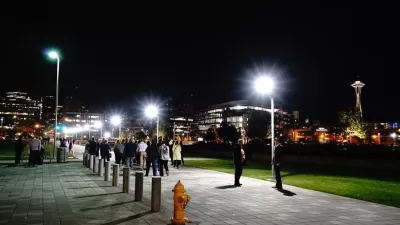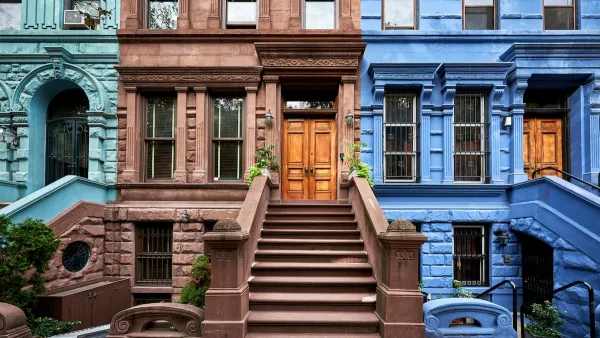Architectural historian Mitchell Schwarzer traces the historic roots of container architecture and argues that today's shipping container developments, like Proxy in San Francisco, are leading the way to a new kind of urbanism.
The repurposed shipping container has become a fixture of urban architecture — part of a movement, as Schwarzer argues, toward an "urban design as flexible, responsive and electric as the currents that feed it."
On Places, Schwarzer examines the rise of container urbanism from the mid 20th century to now, from Archigram and the Metabolists in the '60s to the pop-up markets and modular housing of today; and he sees in this latest phase a "landmark change" for architecture.
"By facilitating an almost instant building complex," he writes, "the containers put architectural production more in sync with the speed and transitoriness of contemporary life, forcing it to respond to a city’s many complex, adaptive systems."
FULL STORY: The Emergence of Container Urbanism

Maui's Vacation Rental Debate Turns Ugly
Verbal attacks, misinformation campaigns and fistfights plague a high-stakes debate to convert thousands of vacation rentals into long-term housing.

Planetizen Federal Action Tracker
A weekly monitor of how Trump’s orders and actions are impacting planners and planning in America.

Chicago’s Ghost Rails
Just beneath the surface of the modern city lie the remnants of its expansive early 20th-century streetcar system.

Bend, Oregon Zoning Reforms Prioritize Small-Scale Housing
The city altered its zoning code to allow multi-family housing and eliminated parking mandates citywide.

Amtrak Cutting Jobs, Funding to High-Speed Rail
The agency plans to cut 10 percent of its workforce and has confirmed it will not fund new high-speed rail projects.

LA Denies Basic Services to Unhoused Residents
The city has repeatedly failed to respond to requests for trash pickup at encampment sites, and eliminated a program that provided mobile showers and toilets.
Urban Design for Planners 1: Software Tools
This six-course series explores essential urban design concepts using open source software and equips planners with the tools they need to participate fully in the urban design process.
Planning for Universal Design
Learn the tools for implementing Universal Design in planning regulations.
planning NEXT
Appalachian Highlands Housing Partners
Mpact (founded as Rail~Volution)
City of Camden Redevelopment Agency
City of Astoria
City of Portland
City of Laramie





























